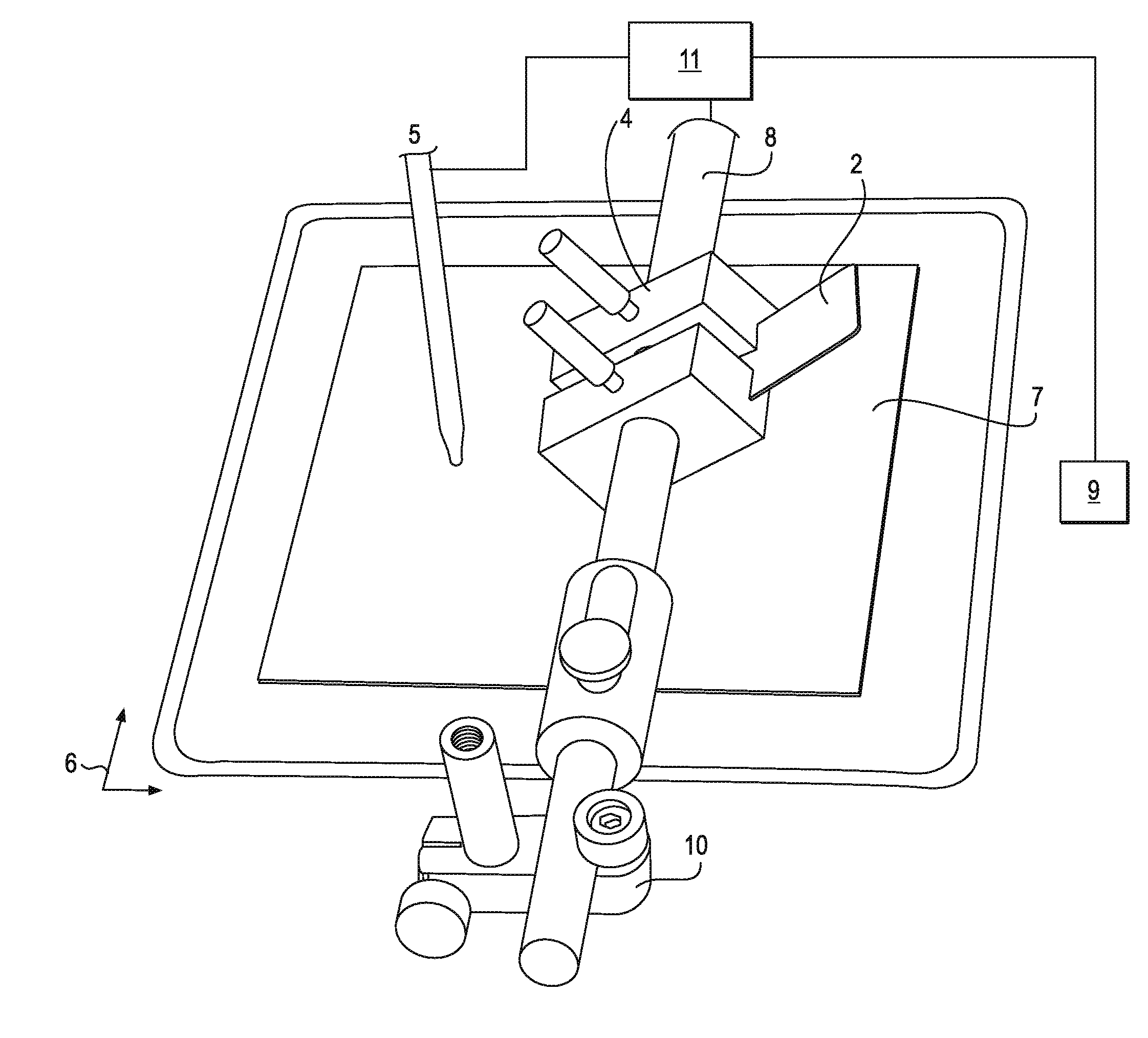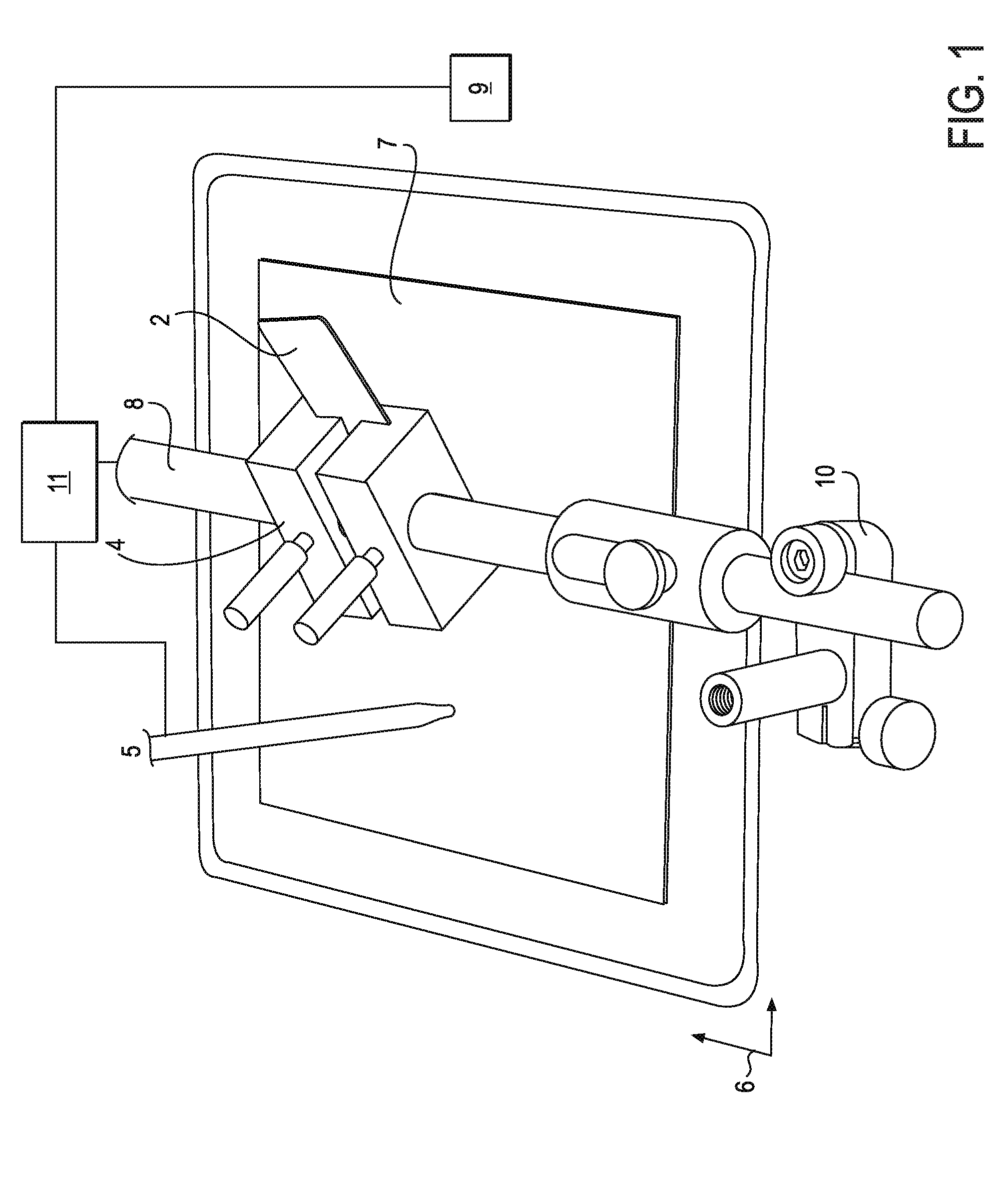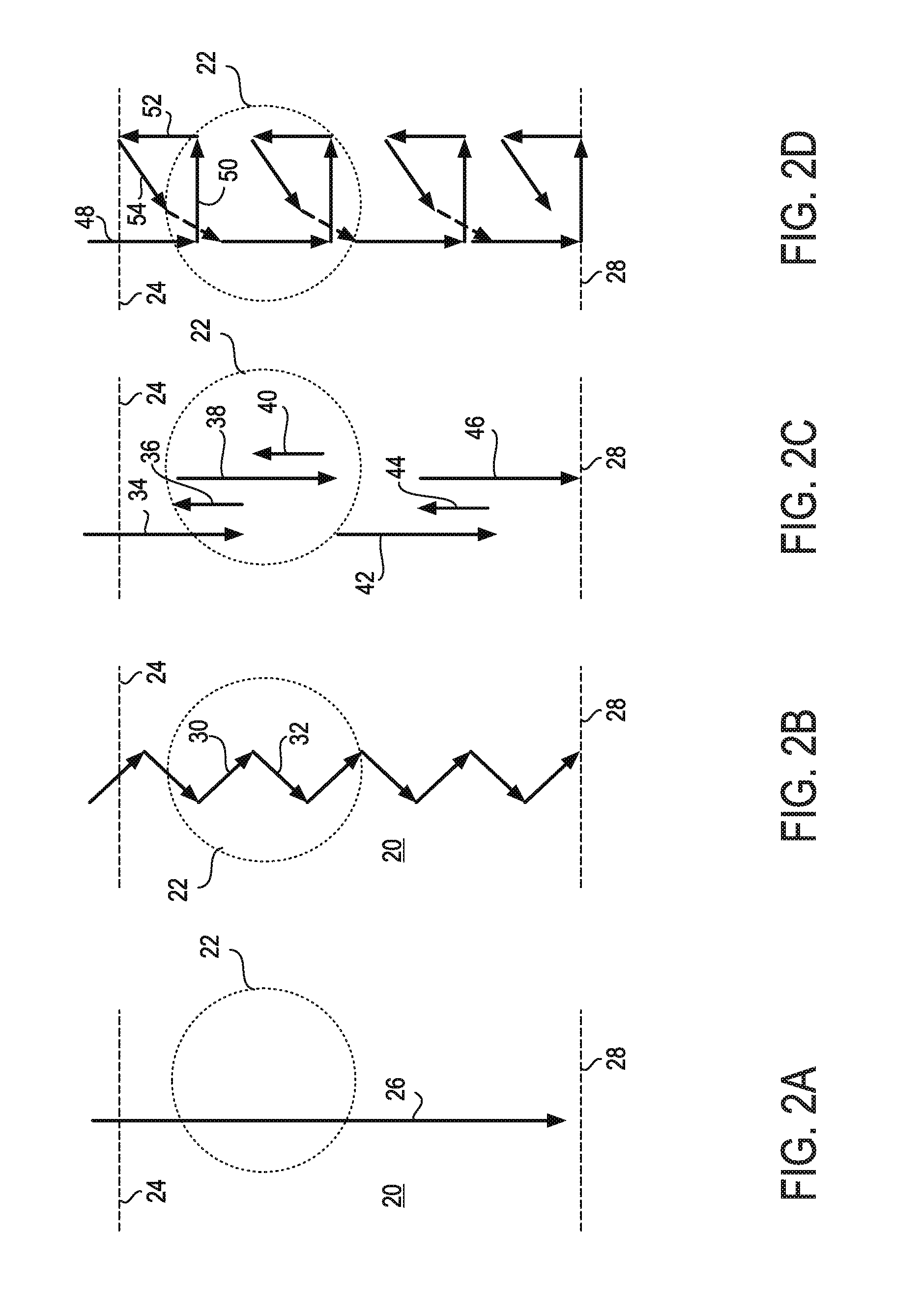Automated system to create a cell smear
a cell smear and automatic technology, applied in the field of automatic system to create a cell smear, can solve the problems of low number of cells circulating and low process efficiency
- Summary
- Abstract
- Description
- Claims
- Application Information
AI Technical Summary
Benefits of technology
Problems solved by technology
Method used
Image
Examples
example 1
[0139]FIG. 19 shows a schematic layer of predominantly red blood cells from a whole blood smear where the vast majority of cells in the sample are red blood cells 500. This image shows a typical high density smear of red blood cells imaged with 420 nm transmitted light to highlight the cells using hemoglobin absorption. The smear parameters were 25 mm / sec smear speed, smooth edge glass smear head, styrene flexure, and 30 degree smear head angle. FIG. 22 is a photograph that shows a portion of a representative smear of the original results.
example 2
[0140]FIG. 20 shows a layer of cells enriched for cells of interest and smeared using the same parameters as described above for FIG. 19, but with a higher smear blade / substrate angle. Many white blood cells 504 are detected among the red blood cells 502. FIG. 23 is a photograph that shows a portion of a representative smear of the original results.
example 3
[0141]FIG. 21 shows a layer of cells enriched for cells of interest and smeared using the same parameters as described above for FIGS. 19 and 20, except that a medium angle smear (25 degrees) was used. White blood cells 512 are detected among red blood cells 510. Note the reduced density of the smear showing the ability to control smear density by head angle. FIG. 24 is a photograph that shows a portion of a representative smear of the original results.
PUM
| Property | Measurement | Unit |
|---|---|---|
| frequency | aaaaa | aaaaa |
| area | aaaaa | aaaaa |
| area | aaaaa | aaaaa |
Abstract
Description
Claims
Application Information
 Login to View More
Login to View More - R&D
- Intellectual Property
- Life Sciences
- Materials
- Tech Scout
- Unparalleled Data Quality
- Higher Quality Content
- 60% Fewer Hallucinations
Browse by: Latest US Patents, China's latest patents, Technical Efficacy Thesaurus, Application Domain, Technology Topic, Popular Technical Reports.
© 2025 PatSnap. All rights reserved.Legal|Privacy policy|Modern Slavery Act Transparency Statement|Sitemap|About US| Contact US: help@patsnap.com



